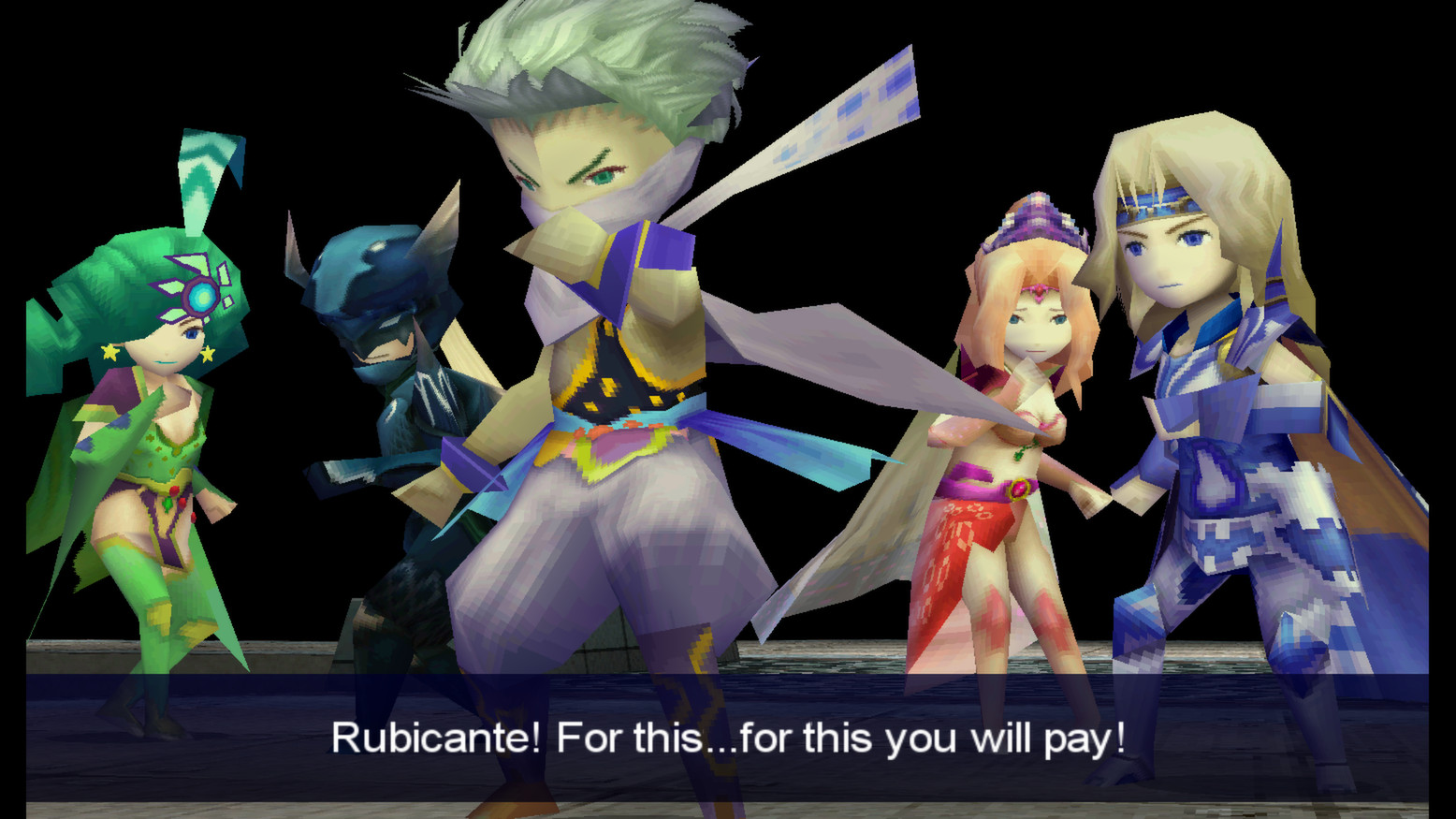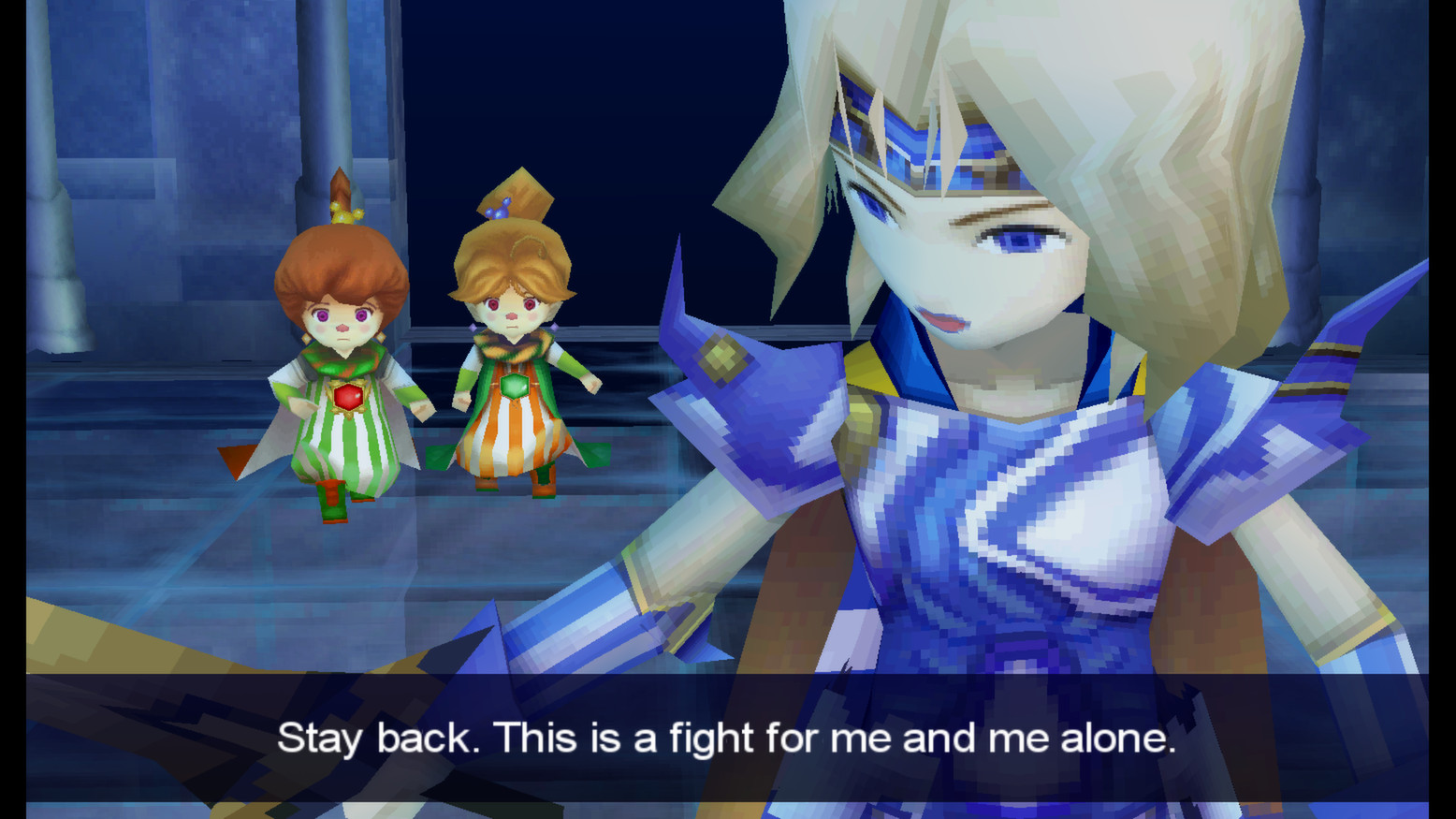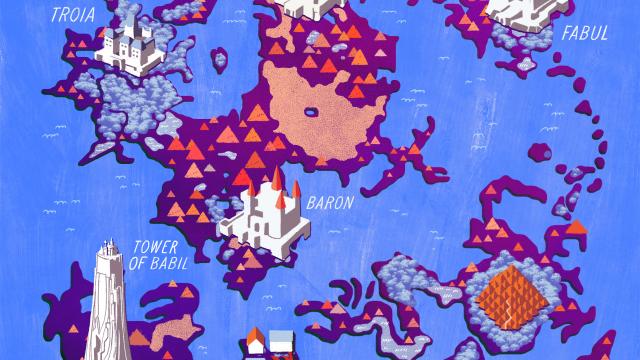There’s a scene in Final Fantasy IV that’s always stood out to me. It centres around the elderly wizard Tellah, who starts off with a puny library of magic but eventually, thanks to divine intervention and a magical house of mirrors, remembers that he’s actually a talented badass with access to every spell in the game.
Illustration by Angelica Alzona, who just continues to kill it
Except one, that is. If you happen to browse Tellah’s spellbook once he’s ‘remembered’ everything he lost over the years, you’ll find that he knows a spell called Meteo, but can’t actually cast it. (The name is a victim of localisation constraints; it was meant to be Meteor, although ‘Meteo’ has a certain flair that I’ve grown to love.)
See, Meteo costs 99 magic points. Tellah’s MP caps out at 90. You might wonder, when playing Final Fantasy IV, why this is the case, and whether Tellah might later gain more MP, as his party members do, so he can use this seemingly revered spell in battle.
This is part four of Kotaku’s Final Fantasy Retrospective, in which we take a look back at every mainline FF game leading up to Final Fantasy XV.
Play a few more hours and you’ll finally get an answer. Tellah has been fighting alongside your party in hopes of defeating the dark knight and generally evil dude Golbez, whose brainwashed army of airships flung firebombs at a castle earlier in the game, murdering Tellah’s daughter Anna in the process. Blinded by grief and vengeance, Tellah charges at Golbez, challenging him to one-on-one combat.
We’d seen Tellah engage in this sort of recklessness before, hours earlier, when he blamed the bard Edward for Anna’s death and headbutted him in much the same way. But where that battle was a farce — Tellah didn’t even bother using magic — this duel is deadly serious. Tellah wants nothing more than to see Golbez die, no matter what it takes.
After flinging a few spells at Golbez and watching them bounce off his black armour like rubber, Tellah declares that he’s going to use Meteo. His friends scream that this is a bad idea, that he should restrain himself, that it will kill him, but Tellah doesn’t care. Fireballs rain from the sky, and Golbez’s battle avatar disintegrates, seemingly destroyed. But hey, as it turns out, Golbez is fine. He flees the room while Tellah lies on the ground in a heap, dying from the energy he just spent.
This scene has always stayed in my mind for several reasons. It’s tragic, of course: In a game full of sacrificial fake-outs, Tellah is the only main character to die for real, and with his last gasp, he manages to accomplish absolutely nothing. More importantly, Tellah’s death stuck with me because it makes mechanical sense. When your characters lose all their health, they’re just knocked unconscious. But when one of them tries to use more MP than he actually has, he drains up all his life energy and dies. HP is physical; MP is spiritual. Well of course he died. Meteo sucked the soul right out of his body.
Final Fantasy IV wasn’t the first console game to try to tell an ambitious story — Japanese developers used the Super Nintendo era as an opportunity to experiment with all sorts of narrative structures — but it was, in 1991, the best by far. FFIV’s characters have legitimate arcs, growing and evolving as you progressed through the game. There are some genuinely moving moments, like an early scene where the party talks the summoner Rydia into overcoming her PTSD and casting the fire spell so they can progress through a mountain range and try to save a nearby castle from falling to Golbez’s forces. After this scene, Rydia also musters up the courage to cast fire in combat. This symbiotic relationship between narrative and combat mechanics would be an ongoing trend not just in Final Fantasy IV but in many of its descendants as well.
After struggling through three clunky NES games, we’ve finally gotten to the games that make Final Fantasy so special.
The story: Cecil, a dark knight and airship captain from the jingoistic Kingdom of Baron, begins to outwardly question his king’s order to slaughter a village full of wizards. He does this after slaughtering a village full of wizards. Baron’s king strips Cecil of his command and sends him out on yet another genocidal quest, which makes Cecil snap.
After fighting his way through underground tunnels, zombie mountains, and sandlion dens, Cecil renounces the way of dark knightdom and becomes a holy paladin (starting fresh from level 1, in another great example of that story-gameplay symbiosis that Final Fantasy has mastered over the years).
Over the course of this journey, Cecil discovers that behind King Baron’s strange behaviour is a dude named Golbez, who has a grand plan to collect all the world’s crystals and kill everyone (or something — it’s really never quite clear). Golbez makes it really, really personal, so Cecil sets out to defeat him, assembling a lineup of quirky party members along the way. Cecil and his party thwart evil dancing dolls, giant walls, and wolves made of fire. Eventually they even go to the moon, because Final Fantasy has always been insane.

The gimmick: Death fake-outs. Aside from Tellah, almost all of your party members sacrifice themselves or are knocked out of commission at various points in the game. You always think they’re dead. They never actually are. These death fake-outs are mostly designed as an excuse to sub people in and out of your party, which caps out at five people and is usually predetermined by the game. (In the original version you couldn’t swap characters at all, though later incarnations of FFIV on GBA and DS allow you to customise your party for the final dungeon.)
And also: Final Fantasy IV is the first game to introduce Active Time Battles, one of the most iconic combat systems in JRPG history. It’s a brilliant system that blends the strategy of turn-based battling with the frenetic pace of action games, and Final Fantasy would stick with it up until the PlayStation 2 era, when Tidus came along and ruined everything. (Just kidding. We’ll get to him later.)
The best character: FuSoYa, an alien wizard whose character sprite is 20% person and 80% beard. Remember how Tellah couldn’t cast Meteo without dying? FuSoYa can cast Meteo and then throw in a couple of Nukes without breaking a sweat. He’s a beast.
The worst character: Edward, who is so useless that one of his abilities, Hide, just straight-up removes him from battle while the rest of your team fights. Let me reiterate: his special power is to leave combat so everyone else can handle things without him. Edward sucks.
Dumbest plot twist: You may expect, after 20 or 25 hours of chasing Golbez around the planet, that your hunt will end with an epic boss battle against him, but no. As it turns out, he was brainwashed by some nasty alien who pops up at the end of the game and reveals himself as The Real Final Boss. Final Fantasy IV’s otherwise-excellent storytelling is undermined by this dumb twist, one that the series would return to again (for no real reason) in Final Fantasy IX.
Number of vehicles: Four — a new Final Fantasy record. There’s a hovercraft, two airships (the Enterprise and the Falcon), and a giant mechanical whale that lets you travel to the moon. Said giant whale is equipped with an obese chocobo who can store items and help you manage your inventory. The world is also filled with thinner chocobos who can help you out in different ways: the yellow ones can run; the white ones restore your MP; and the black ones can fly. Like I said: Final Fantasy has always been insane.
Number of giant robots: One! You get to go inside of his various body parts (Neck, Stomach, etc.) and defeat his CPU. Don’t let anyone ever tell you that Final Fantasy turned sci-fi in the later years. It was always sci-fi.
Fun fact: There are four hidden summon monsters that most people never actually known about, mostly because you can only get them as rare drops: Imp, Mage, Cockatrice, and Bomb. None of them are worth the MP, especially once you’ve gotten Leviathan and Bahamut, but it’s incredible to think that some people (like me!) grew up playing Final Fantasy IV dozens of times yet had no idea these hidden summons existed.

Your buddy Cid: FFIV is the first Final Fantasy to turn Cid into a party member. He’s still a weird old engineer, mind you, but this time he can hit enemies with a goddamn hammer, which ranks him among the top three Cids of all time in my book. Like most of your party members, he sacrifices himself to save you, then later turns out to be alive.
The best piece of music: This one is tricky. Final Fantasy IV is where Nobuo Uematsu really started hitting his stride, taking advantage of the Super Nintendo’s S-SMP audio processor to pump out incredible tracks like Red Wings, Theme of Love, Hey Cid, Troian Beauty, Dancing Calcobrena, the boss battle music, and so many more. Ultimately my favourite might be Rydia’s Theme, but if you ask me again in a few months I bet that will change.
Another fun fact: Early in Final Fantasy IV you can skip past the first event (where Cecil inadvertently blows up Rydia’s village) by doing an easy save-file trick. The game will hard-lock when you get to Damcyan, so the trick won’t let you break the entire game, but speedrunners use it to enter Rydia’s village from the opposite side, where they can buy a powerful weapon called Dancing Dagger that’s useful for beating enemies as quickly as possible.
The best boss: Rubicant, the fiend of fire. His colleagues are a bunch of dicks, but he’s super chill. When you encounter him, he heals you so you can have as fair a fight as possible. He even gets mad at his weirdo mad scientist underling for turning Edge’s parents into monsters.
Does the game still hold up? Yes! Final Fantasy IV isn’t the greatest RPG you’ll ever play, nor is it as revolutionary in 2016 as it was in 1991, but it’s a very good game that does some really interesting things (and has a truly incredible soundtrack).
One last thing you should know: Final Fantasy IV is on just about every platform, from PC to PSP to TI-83 calculators. Jury’s out on which one is the best. Just don’t bother with Final Fantasy IV: The After Years, the worst Final Fantasy game ever made.

Comments
3 responses to “Final Fantasy IV Was Ahead Of Its Time”
Great game. The SNES really was the golden age for jrpgs with my favorite being chrono trigger
My favourite Final Fantasy.
I liked The After Years, Edward became so much cooler and the moon phases really changed up the battles, made me less reliant on mashing the attack command on random battles.
Back when I first played and I didn’t know that the sacrifices would be fake-outs, Palom and Porom’s sacrifice really got me. It was an extremely courageous thing to do for two kids that had been mostly annoying until that point.